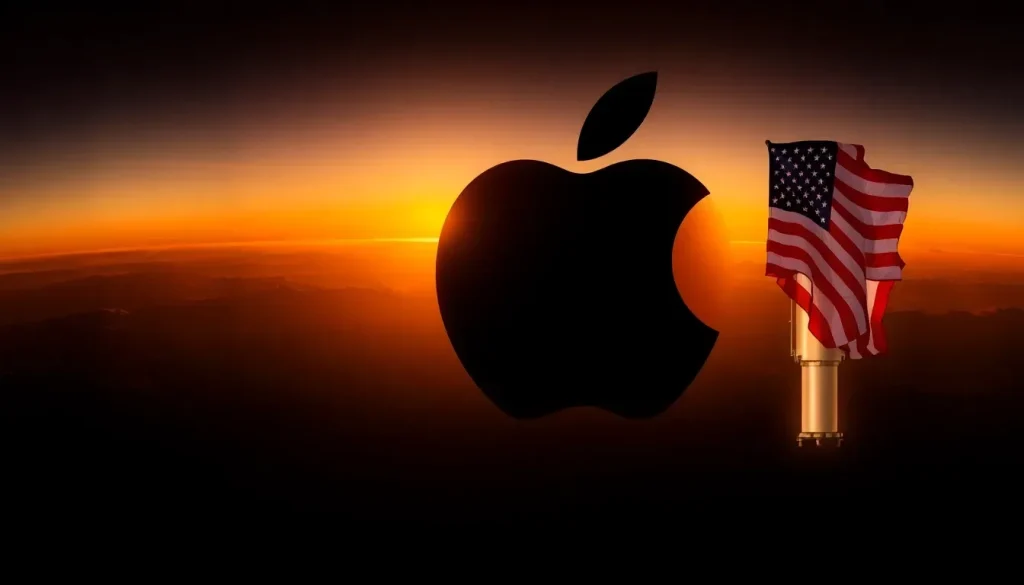Signs of a Potential Collaboration Between Apple and SpaceX

Elon Musk has long envisioned a future where SpaceX’s Starlink network provides seamless satellite connectivity to Apple iPhones. While the idea was floated a few years ago without success, recent developments suggest that this once-distant partnership could soon become a reality.
As technology evolves and the demand for reliable connectivity grows, Apple and SpaceX appear to be aligning their capabilities. With the increasing reliance on mobile devices for emergency communication and navigation, the integration of satellite support into iPhones is more crucial than ever. Let’s delve into the emerging signs of a potential collaboration between these two tech giants.
Recent Developments Indicating a Possible Partnership
According to The Information, several factors are converging that point towards a potential alliance between Apple and SpaceX. Here are some key developments:
- Support for Apple’s Frequency Bands: SpaceX has redesigned its Starlink satellites to be compatible with the radio spectrum used by Apple iPhones, paving the way for potential integration.
- Current Emergency Services: Apple utilizes Globalstar's satellite service for its 'Emergency SOS' feature, enabling users to reach emergency services when cellular networks are unavailable.
- Location Sharing: This service allows iPhone users to share their location and communicate with personal contacts and first responders, enhancing safety features.
- Shifting Partnerships: There is a noticeable distancing between Apple and Globalstar, with discussions of a potential sale of Globalstar for over $10 billion.
- Competition with Starlink: Globalstar continues to face challenges from Starlink’s growing dominance in satellite communication.
- Financial Investment: Apple has invested approximately $2 billion in Globalstar over recent years, but a buyout seems unlikely, primarily to avoid regulatory issues as a carrier.
- Acquisition of Spectrum: SpaceX recently acquired EchoStar’s wireless spectrum for $17 billion, a move that will significantly enhance Starlink’s service capabilities.
- Integration Plans: SpaceX President Gwynne Shotwell announced collaborations with chipmakers to integrate satellite connectivity into smartphones.
- Future Plans: Reports indicate that Apple is planning to include support for satellite-based 5G internet in its devices as early as next year.
These developments not only hint at a partnership but also suggest that consumer expectations for mobile connectivity are shifting. Users are increasingly seeking alternatives to traditional cellular networks, especially in remote or underserved areas.
The Context of Satellite Connectivity in Modern Smartphones
As smartphones become integral to daily life, the need for constant connectivity is paramount. Satellite connectivity offers a compelling solution, particularly in situations where traditional service is lacking. Consider the following advantages:
- Global Coverage: Satellite networks can provide coverage in remote areas where terrestrial networks are unavailable.
- Emergency Services: Enhanced communication options during natural disasters or emergencies can save lives.
- Seamless Connectivity: Users can stay connected while traveling, whether on land, sea, or air.
- Potential for IoT Integration: Satellite connectivity can enable smart devices in areas without reliable internet access.
With the advent of 5G and beyond, integrating satellite communication into smartphones could become a game-changer, positioning both Apple and SpaceX at the forefront of mobile technology.
The Challenges Ahead
Despite the promising developments, several hurdles remain that could complicate a partnership between Apple and SpaceX. One significant obstacle is the history of tension between Elon Musk and Apple’s CEO, Tim Cook. In 2022, Musk proposed a partnership model that Apple ultimately rejected, highlighting the complexities of establishing a working relationship.
Moreover, Musk’s recent legal actions against Apple, including a lawsuit related to App Store practices, have added another layer of friction. These incidents could hinder negotiations and collaboration efforts in the future.
What This Means for Consumers
If Apple and SpaceX can successfully navigate their differences and form a partnership, the implications for consumers could be substantial. Here are some potential benefits:
- Enhanced Safety Features: Users could benefit from reliable emergency communications, even in the most remote locations.
- Improved Connectivity: Access to faster and more reliable internet services, especially in underserved areas.
- Innovative Features: Potential new functionalities that leverage satellite technology, making the iPhone an even more indispensable tool.
- Competitive Pricing: Increased competition in the satellite service market could lead to more affordable options for consumers.
As the tech landscape evolves, the collaboration between Apple and SpaceX could redefine how we think about connectivity and mobile technology.
Looking Ahead: The Future of Satellite Communication
The future of satellite communication in smartphones is promising yet uncertain. With major players like SpaceX and Apple exploring possibilities, it’s clear that consumers can expect exciting advancements. Apple's push towards integrating satellite services could revolutionize how users interact with their devices, especially in emergency situations.
For those interested in visual insights regarding this potential partnership, take a moment to watch this informative video:
As we continue to monitor the developments in this space, it will be crucial to consider how emerging technologies will impact our daily lives and the way we communicate. The integration of satellite connectivity into smartphones is just one facet of a broader technological evolution shaping the future.




Leave a Reply